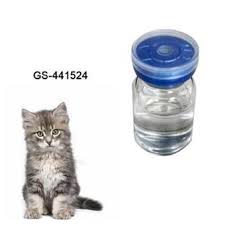
- +86-13363869198
- weimiaohb@126.com

ທ.ວ. . 11, 2024 18:43 Back to list
Eperisone Hydrochloride CAS 56839-43-1 Overview and Pharmacological Insights
Eperisone Hydrochloride A Comprehensive Overview
Eperisone hydrochloride, identified by its CAS number 56839-43-1, is a muscle relaxant that has garnered attention for its effective use in the treatment of various muscle spasticity conditions. It is a synthetic drug primarily utilized in managing muscle tension and pain due to its ability to alleviate discomfort and enhance mobility in affected individuals.
Mechanism of Action
Eperisone functions primarily as a central muscle relaxant. While its exact mechanism is not fully understood, it is believed to involve multiple pathways. Eperisone has effects on the central nervous system (CNS), helping to inhibit the reflex pathways that lead to muscle contraction. This action helps to reduce muscle spasm and the associated discomfort. It has also been shown to have a mild analgesic effect, which further enhances its therapeutic efficacy in conditions characterized by muscular tension and pain.
Clinical Applications
The primary clinical indication for eperisone hydrochloride is to relieve muscle spasms associated with various neurological disorders, such as stroke, spinal cord injuries, and multiple sclerosis. In addition to neurological conditions, eperisone is commonly prescribed for musculoskeletal disorders where muscle tightness contributes to pain and impaired function, including cases of chronic back pain, osteoarthritis, and other similar conditions.
Eperisone's utility is particularly significant in rehabilitation settings, where restoring mobility and function is a primary goal. By reducing muscle spasticity, eperisone facilitates physical therapy and strengthens the overall recovery process. It is often used in conjunction with other therapeutic modalities, including exercise and manual therapy, to optimize patient outcomes.
Dosing and Administration
Eperisone hydrochloride is typically administered orally in tablet form. The exact dosage may vary depending on the patient’s condition, age, and response to treatment. It is essential for healthcare providers to tailor the dosing regimen to ensure effectiveness while minimizing potential side effects. Standard dosing usually begins at a low level, gradually increased to achieve the desired therapeutic effect, while monitoring for adverse events.
eperisone hydrochloride cas 56839-43-1

Side Effects and Precautions
As with any medication, eperisone hydrochloride is not without its side effects. Commonly reported adverse effects include gastrointestinal disturbances, dizziness, drowsiness, and allergic reactions. Given its CNS effects, patients should use caution when operating machinery or driving until they fully understand how the drug affects them.
Special precautions are required for individuals with pre-existing medical conditions, such as liver or kidney impairments, and in pregnant or breastfeeding women. Because eperisone can influence muscle function, it is crucial that healthcare professionals conduct thorough evaluations to determine the appropriateness of this medication for each patient.
Comparative Effectiveness
Eperisone hydrochloride is often compared to other muscle relaxants, such as baclofen, tizanidine, and diazepam. Clinical studies have suggested that eperisone may cause fewer sedative effects compared to benzodiazepines, which can be advantageous for patients who require muscle relaxation without significant sedation. However, the choice of a muscle relaxant often depends on individual patient characteristics, specific diagnoses, and the therapeutic goals of treatment.
Conclusion
Eperisone hydrochloride is a valuable addition to the pharmacological arsenal for managing muscle spasticity and pain. Its central mechanism of action, coupled with its comparative safety profile, makes it a preferred choice for many healthcare providers. As research continues, further insights into its effectiveness and potential applications may enhance its role in both acute and chronic treatment scenarios.
In summary, eperisone hydrochloride represents a significant advancement in muscle relaxant therapy, offering relief to many patients suffering from debilitating muscle tightness and enhancing their quality of life. Its integration into treatment protocols, supported by appropriate clinical guidance, is essential for optimizing patient outcomes in various clinical settings. With continued investigation and awareness, eperisone could pave the way for improved therapeutic strategies in the field of rehabilitation and pain management.
-
High Quality SGT-163 CAS 1099-87-2 Supplier & Factory Reliable SGT-163 Manufacturer
NewsJun.10,2025
-
High Quality 3-Chloropyridine CAS 626-60-8 - Reliable Factories & Suppliers
NewsJun.10,2025
-
CAS 157115-85-0 Bulk Suppliers - High Purity & Low Prices
NewsJun.10,2025
-
High Purity PMK Ethyl Glycidate Manufacturer 99% Quality Supply
NewsJun.10,2025
-
Pure CAS 57-85-2 Testosterone Propionate Pharma Grade Supplier
NewsJun.09,2025
-
Premium Tadalafil CAS 171596-29-5 Suppliers & Factories
NewsJun.09,2025